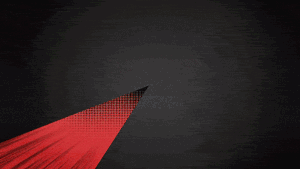Basin stocks up on uranium targets at Geikie

Basin is driving on with new uranium targets in Canada. Pic via Getty Images
Basin has identified four high priority uranium targets at its Geikie project in Canada’s Athabasca Basin just a little more than a week after listing on the ASX.
The targets were identified following the receipt of data from its high resolution airborne radiometric and magnetic data survey, which also defined additional structural corridors previously unknown in the region.
Basin Energy (ASX:BSN) says the result enhances what it already believes to be a highly prospective area for near surface uranium mineralisation which remains untested.
As such, it is now planning an aggressive exploration program with pre-winter ground prospecting now underway and a follow-up project-wide high resolution airborne electromagnetic survey currently being fast tracked to start in November.
These works will further refine the drill targeting, allowing drill testing of the highest priority targets to commence in the first quarter of 2023.
“The survey data now received for the Geikie project is of exceptional quality and has provided a solid foundation for the drill targeting of uranium exploration at Geikie,” managing director Peter Moorhouse said.
“The new survey is a significant enhancement of the historical dataset and has not only refined the initial areas of interest, but also added a number of previously unrecognised prospective zones within the licence area.
“We have a clear exploration pathway ahead of us, with prospecting underway and further geophysics scheduled to commence next month, culminating in the maiden drilling in Q1 2023.”
New radiometric and magnetic data
The high-resolution survey was carried out over the entire project area to refine areas of interest, aid with structural mapping as a direct targeting tool for identifying potential mineralising structural corridors, and as a lithological mapping tool for refining the geological framework to identify favourable host mineralisation conditions.
This successfully identified two additional lineaments of equal prospectivity to the two known north-south trending lineaments, which when overlayed with the element ratios and geophysical surveys resulted in four additional priority areas being identified, one of these being the expansion of the Mud Lake prospect.
GK1 is a large cluster of radiometric anomalies within a 9km by 3km area with a north-easterly trend in the northern quarter of the licence package. A historical EM survey in the west of the area appears to show a strong conductor running parallel with the anomalous cluster.
GK2 is an expansion of the historic Mud Lake prospect and is one of the few areas in the licence with historical grab samples returning up to 0.225% U3O8 with radiometric data showing a north-easterly trend of anomalism being crosscut by two regional north northwesterly trending Tabbernor faults.
This is located about 10km along strike from drilling completed by Baselode Energy, which identified basement hosted mineralisation at Beckett.
Meanwhile, GK3 is discrete coherent radiometric anomaly with geology that appears disrupted by a north-westerly trending structure which is coincident with the anomalous uranium grab samples from GK2 to the south while GK4 is a strong coherent radiometric anomaly striking north-easterly and mapped as Wollaston calc silicate rocks.
This article was developed in collaboration with Basin Energy, a Stockhead advertiser at the time of publishing.
This article does not constitute financial product advice. You should consider obtaining independent advice before making any financial decisions.
Related Topics

UNLOCK INSIGHTS
Discover the untold stories of emerging ASX stocks.
Daily news and expert analysis, it's free to subscribe.
By proceeding, you confirm you understand that we handle personal information in accordance with our Privacy Policy.








